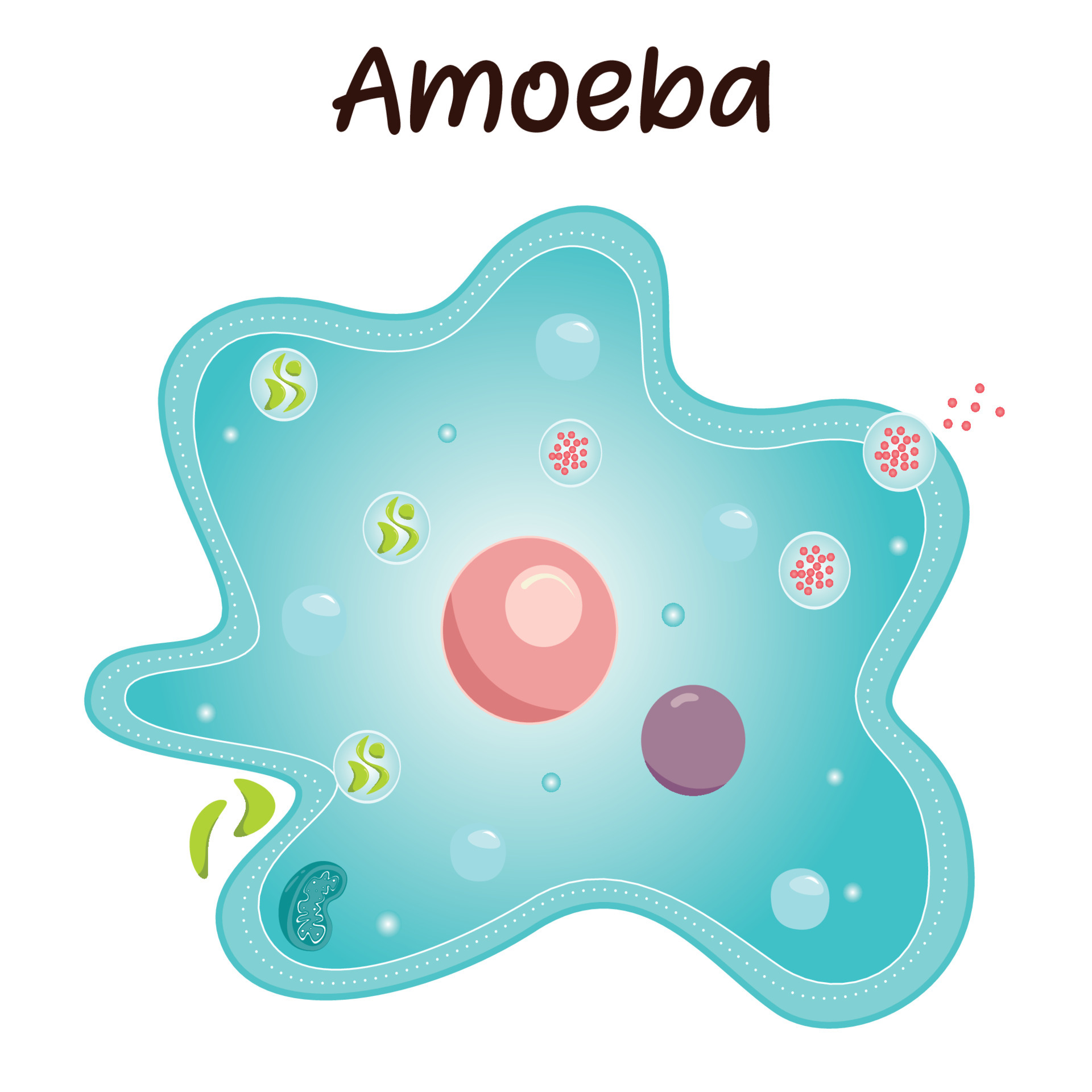- cross-posted to:
- technology@lemmy.zip
- technology@lemmy.world
- hackernews
- cross-posted to:
- technology@lemmy.zip
- technology@lemmy.world
- hackernews
" CATL has thrown its hat into the ring with the Naxtra sodium-ion battery, with 175 Wh/kg and 10,000 lifetime cycles along with operation from -40°C to 70°C. CATL is planning a start-stop battery for trucks using the technology. It has the potential to replace lead-acid batteries. CATL has announced battery pricing at the cell level in volume at $19/kWh. "
For anyone wondering what “10,000 lifetime cycles” means, it’s full charge / discharge to the point that the batteries are at 80% of original capacity so 10,000 is to me an absolutely incredible number.
A typical phone battery is rated for about 500 (you can massively improve this by not charging it beyond 80%).
This also means that, when you buy a car with say a 500 km range, that the battery will last for 10,000 x 500 = 5 million kms. That is an absolutely insane number compared to cars that are on the road right now. And one you will obviously only reach if the rest of the car can keep up. EVs are already doing well compared to ICE cars in this regard, but this is almost an order of magnitude larger than the current status quo.
Also, considering that modern cars are considered totaled by basically any accident, it’s not going to be the limiting factor on the car’s lifetime. It’s mostly a talking point by ICE advocates who stealthily imply million km cars are typical.
Million km cars may not be typical, but it’s not an incredibly difficult number to reach with an ICE. But my issue here has always been the whole getting a bomb dropped on you issue of BEVs. The batteries have gotten better over time, but they can still fail fairly early sometimes and then it costs more to replace than the residual value of the vehicle. Whereas a poor person with skills can rebuild parts of an internal combustion engine for a reasonable amount of money because it’s possible to offset the labor into a time cost instead of money. Plus you can get a junkyard engine for cheap and go another 100k km or maybe way more if you’re lucky.
It’s a second, third or tenth owner problem which is why a lot of people overlook it.
Now the extra charge cycles of the sodium battery compared to lithium are already a significant step in making this a non-issue, but the true progress is in the fact that they’re cheaper, so out of warranty battery replacements might start making financial sense compared to parting out a car after only 10 years due to replacement costs.
This could be a true game changer for second hand EVs. Which means the people who buy brand new cars should also be more motivated to buy EVs because depreciation might become more reasonable. Right now the prices drop off a cliff as the battery warranty starts nearing its end.
Which is stupid, because current batteries already last way longer than most ICE cars. IMHO the depreciation is mostly because newer EV’s are still getting better at such a rapid pace, not because second-hand EV’s aren’t great cars (with a few notable exceptions, such as 1st gen Nissan Leafs, which didn’t have active battery cooling). I drive a 2016 EV and it’s still pretty much as it was when new, battery included.
It’s not stupid. Being out five figures for a battery replacement is a real fear for a lot of people. Someone asked the dealership how much it would cost to get a battery replacement on an E-Tron and the answer was 70k USD once out of warranty. They cost 30k and less for the older ones and they’re still in warranty.
It’s unlikely to happen but if it does it makes your whole car a paperweight. This isn’t nearly as bad with ICEs where by the time catastrophic failure is even slightly likely, parts are so cheap you can get an engine for a few grand if not just a few hundred. Even a used battery for said E tron is 20 grand. My entire car cost me under 2k, less than some HYBRID batteries let alone BEV batteries.
This axe hanging above your head is what I’m hoping sodium batteries would solve. You don’t have to worry about “what if the battery starts deteriorating rapidly now that it’s out of warranty and I don’t have 30k to spend on it” if the battery costs 5k new and 1k used in good condition.
Batteries have outliers that don’t last long as well as those that last several times longer than projected. Same as ICEs. It’s just a very expensive lottery to win right now.
Technology Connections and Hank Green have been shouting this for a while, but that whole issue is way overblown. Some first gen EVs around 2010 had issues, but every major manufacturer since then has way exceeded expectations on battery lifetime thanks to advanced BMS and thermal controls. Car batteries don’t just rapidly degrade out of the blue, the tech has nothing in common with what’s in your phone. But public sentiment has not caught up because most people think Li-Ion = smartphone = dead after 2-5 years, so second hand EVs are way undervalued. Which is great for buyers.
It’s not like you can’t easily total a second-hand ICE by mechanical failure. Just ask anyone who own(ed) a puretech engine. If you went by manufacturer recommendations, the fucking thing might just eat your timing belt one day and grenade itself. And there’s no way a full engine swap on a 5-10 year old economy car is economically viable.
There’s always something that could go wrong when you buy a car. Unless you get comprehensive insurance and warranty, you need to accept the fact that losing the entire car to an accident, catastrophic mechanical failure, or theft is always a risk. If that’s too much anxiety to deal with, get a lease.
Car batteries don’t just rapidly degrade out of the blue
Tell that to the guy who had his Tesla blown up because of the battery replacement cost. Or anyone with an Audi E-Tron where after you go have it checked out for the battery recall, they limit you to max 80% charge on a car with already poor range, “just in case”.
It’s not like you can’t easily total a second-hand ICE by mechanical failure. Just ask anyone who own(ed) a puretech engine. If you went by manufacturer recommendations, the fucking thing might just eat your timing belt one day and grenade itself. And there’s no way a full engine swap on a 5-10 year old economy car is economically viable.
Ah, but I wouldn’t buy a puretech engine. For one, too few cylinders. Secondly, I already know it’s a bad engine. The point of buying cars second hand is that others have already done ridiculous mileages on similar engines so you know if they’re good or not. If I want an economical engine from that time period, the Mercedes OM651 and OM654 are pretty durable and use very little fuel. I would of course prefer a 6 cylinder, but we’re talking about economy cars here.
There’s always something that could go wrong when you buy a car. Unless you get comprehensive insurance and warranty, you need to accept the fact that losing the entire car to an accident, catastrophic mechanical failure, or theft is always a risk.
I can get comprehensive insurance on a car up to 15 years old. I can fix or prevent catastrophic mechanical failure on an ICE. The infamous chains on an Audi 3.0 TDI are just chains… a replaceable item. Well actually it’s just the one tensioner that sometimes fails. Same with the infamous camshafts on the 2.5 TDI V6 dubbed “Hitler’s revenge”. The infamous seal that ruins early OM642s may take an entire day to replace at home, but it costs 10€. Most of these infamous early failure modes that people are afraid of are entirely possible to repair at home for a DIY guy. On a BEV I’m shit out of luck. When batteries become affordable, this is no longer the case and once those EVs drop down from 70-100k EUR new to 20k used, I’m buying the shit out of them.
Replacing the batteries with new ones on my $50k when it was new car (BMW i3) would cost me about $10k. Which is roughly what the car is worth on the second-hand market right now. The chances of me ever having to replace said batteries are basically zero. The chance of an ICE car spontaneously setting itself on fire are actually much higher, so this is a massive nothing-burger. When owning a car you should ALWAYS think about what happens if said car is suddenly total-loss the next day. Usually the answer is to replace it with another second-hand, not buy a new (!) battery from the dealer. Hell, second-hand battery packs are a thing too now, and much cheaper. On most EV’s you just drop them from the bottom and pop in the replacement, much less work than replacing an ICE engine.
That’s not a particularly big battery, that’s why your battery is so cheap.
Even so, there’s nearly always someone willing to buy an ICE car off you to fix it, unless it’s a Stellantis product or something. Gets trickier with EVs because, again, cost.
Second hand battery packs are an option, but when I looked at ones for the car I was looking at, they still cost roughly the value of the car, unfortunately. On a car that entered production like 7 or 8 years ago.
It’s not so cheap anymore, you need thousands of dollars worth of tools and also parts if you want to replace parts but even the gasket sets and stuff are hundreds of dollars.
The batteries have gotten better over time, but they can still fail fairly early
Aside from the OG Nissan Leaf with passive cooling, this really seems like more of a scare tactic than an actual issue.
I don’t know about all EVs, but assuming they’re similar to mine:
- battery warranteed for 8 years, 120,000 miles
- solid history of batteries lasting 250,000 miles or more
- aside from accident or manufacturing defect, batteries rarely actually fail. The above are defined for battery health being above 80%
I’m sure it happens that a few people need to replace the battery but they tend to last beyond the full expected lifetime of most cars and the usual failure mode is to continue working with less range
A typical phone battery is rated for about 500 (you can massively improve this by not charging it beyond 80%).
This 80% thing is incredibly simplified and not even always accurate. Personally I charge to about 95% and my phone batteries remain at 98-100% condition after 2 years of everyday use.
Limiting yourself to 80% doesn’t really make sense. You’re losing 20% capacity instantly, instead of losing it slowly over a few years. To be fair, a lot of people treat their devices so poorly that they may hit the 80% in less than 12 months, so I guess there’s that.
I keep my car charged to 80% to help with battery degradation, and here’s why:
-
Most days, I don’t use more than 30% of my battery capacity (roughly 75 miles/120km). Even that’s high. I don’t care if that means I go from 100%->70% or 80%-50% when I’ll charge back up again overnight
-
It’s not a permanent setting! If I do go on a longer trip, I’ll bring it back up to 100% and not sweat it!
From what I’ve heard, charging beyond 80% increases the degradation rate, meaning time spent at that level is an important part of the equation. If I keep my phone plugged in overnight and at my desk, I have a lot of time at full charge that I’m not really using, but if I know I’m flying that day or running errands all day I can pop it up to 100% and it will be a non-degraded 100%
I’ve had my S20 far longer than my car and never did limit its charge. It’s fine for me, but the battery is sure showing its age.
I don’t see this as a valid comparison.
- replacement phone batteries are really not that expensive. Don’t overthink it. Is it really a problem you might spend $50-$100 in three years to replace the battery?
- car batteries are not just much more expensive but they’re also overkill. Charging to 80% is more than enough for almost everyone’s daily driving on most vehicles, so why charge more?
Maybe user replaceable phone batteries are making a comeback, but with the way my phone is pretty much sealed up I wouldn’t trust myself to not break it. I’d also be leery of a third-party replacement lithium battery of unknown quality (let’s be honest, that’s what you’ll probably end up with) charging right next to my head while I sleep. Saying that as someone whose friend had a lithium battery fire with her laptop.
Point is, the argument of “why would you try to save your battery by not using it when it has the same net effect of less battery?” is pretty short-sighted.
User replaceable batteries would be actual cheap, would be nice. But iPhone 15 pro battery replacement at Apple is $100, and I’d expect that to be one of the more expensive battery replacements. Many phones will be cheaper, third parties will be cheaper. While I’d rather do it myself, it’s really not that much for once every three years to keep it above 80% health, and 9% of phone replacement cost.
the argument of “why would you try to save your battery by not using it when it has the same net effect of less battery?” is pretty short-sighted.
The argument is
- why try to save your phone battery when it’s critical to last the day and eventual replacement is cheap?
- it’s much more important to save your car battery because you won’t miss reduced range on normal days, you want max range available for road trips, and replacing the battery is very expensive
-
Yeah, a friend of mine made a similar argument and I hear it. Personally I’m always right beside a fast charger so it’s not an issue for me.
My phone has an option to auto-stop charging at 80% so I use that. I will occasionally charge it to 100% but like maybe once a month. TBH if it had an option to stop at 90% I’d probably use that as a middle ground (my steam deck does and I use 90% with it). I got 5 years out of my last phone and I’m 3 years into the current one and hoping to get many more out of it.
edit:
Personally I charge to about 95% and my phone batteries remain at 98-100% condition after 2 years of everyday use.
That’s a good reference point, cheers. Do you not find it a pain to monitor that though?
I think that fast charging is almost as damaging as full cycles.
OnePlus claim it’s not and a quick search does back that up. For the one specific to my phone they move a chunk of the work off the device (reducing heat on the phone) and onto the charger. It’ll still charge normally with any USB charger but it gets much hotter and is much slower compared to the OnePlus “warp” charge.
Fair enough. I’m using an OP12 myself. I still don’t buy into the “fast charge ok” bit, but I also know it’s parallel cells and such. I still charge overnight using a 5w charger. :)
Not to mention that your phone is already taking these things into consideration.
I don’t know if the same applies to sodium batteries, early indicators are that they are less sensitive to depth of discharge as a degradation driver.
Still, the expected lifetime is going to be at least between 4-8 times NCM (traditional li-ion), which is massive.
Definitely incredible but I still feel like people’s excitement is misdirected.
- they’re less energy dense so not likely to be on phones or many cars
- for cars the extra life is marginal when existing batteries already last more than the life of a typical vehicle
- much cheaper will make a huge difference in low end cars.
- but storage is the killer app! I don’t care about energy density but they’re much cheaper and will last much longer. Huge win!
Imagine if home battery systems cost half as much but last four times as long! Or grid storage! This is huge!
10,000 lifetime cycles
so, 30 years if you charge/discharge it once daily?
Yes.
No, 27,38 years
80? Shit, I have my phone set at 85…
It’s not a dead set value. The worst you can do is keep charging it way past 100%
Now, if we can just get the robber barons and their wholely-owned politicians out of the way of progress…
So, how long do you think 'til the GOP Congress enacts a law blocking said technology and company in order to protect Tesla and oil interests of the United States fascist oligarchy?
You think the Dems won’t help them do it? The Democrats are already backing tariffs and import bans on Chinese cars and solar panels. And I haven’t seen Dems calling out the bans on lab grown meats.
They will engage in the same protectionism, because they’re paid off by the same donors.
Oh yeah, I forgot the Democrats also helped ban cancer vaccines and diabetes cures from Cuba and China. Wake the fuck up.
Honey, where did you put my sodium ion battery?
On the kitchen counter so it can watch me cook dinner.
I’m dumb and don’t get it.
The thumbnail and article show a sodium ion battery pack just randomly on the kitchen counter while a lady is cooking dinner.
Kind of like those stupid Amazon pictures for wusjduejxxw power juicer Chinese knockoff version 4.2 showing it in a pool or some random place.
The YAVNXLT unit offers “elegant and productive for optimum serenity”, but the WZNGLPO says it can “bringing security for the family, business and happiness”.
Thank you. I am not less dumb now but I understand what I dumbed.
Enlightened dumbness 🧘
They probably asked AI for a thumbnail, and since there was the word sodium, they decided to use the kitchen as a background.
AI amazing as always
This is what I’ve been waiting for as residential battery solution. Really nice to see it starting to take off.
Would this be a good replacement for 12v lead acid car batteries as well?
Depends on how fast the technology can dump current. Lead acid is particularly good about dumping a ton of current to crank.
Tell me which stocks to buy.
Tell me which stocks to sell.
FTFY
Most of the USA sodium battery companies are currently in private equities. You can buy Chinese stocks or just wait until it goes SPAC.
The ones this people buy: https://share.google/PWnmursuqNxjrfSSl
If they are not buying some sodium battery producers, you can bet that somehow those batteries will not be “ready for the market” yet
Gold
What will gold do in an apocalypse, time to collect bottle caps
if i can afford one, i’ll buy a car with it. but if i can’t, i’ll keep using my 04 nissan.
If I recall well, it isn’t a good fit for cars as it energy density per weight isn’t as good. But for residential batteries, that’s huge (if true).
This isn’t true any more, and it’s mentioned in the article. Sodium is at least equivalent to - and on pace to surpass - the energy density of Lithium. It’s already being used in passenger cars in the Far East.
Even with an energy density disparity the lower potential for fires and lower effective operating temps it’s a huge upgrade for automotive applications. It’ll definitely replace all 12v batteries.
12v batteries probaby, but EV I’d doubt it considering how much range was a major hurdle to overcome. More weight, less range with the same capacity, meaning you need to add even more capacity, which reduces the space available for everything else.
My vision would be Li-ion will still be the king for medium to high-end EV, but for low-end EV, or those for whom range isn’t as much of a problem than for other (short range commuters) that would indeed be a game changer.
In my case, a 300-400 km range sodium-ion battery car, with a decent fast charge (less that an hour from to 80 percent) would be ideal. I use trains for anything further than that, and my car is mainly used for short range duties (less than 40km a day), once or twice a month. For anything closer than 20km I got my trusty cargo bike (which I use extensively, 2700km last year).
We got solid state to come challenge the car market in a few years. Supposedly both safer and bigger capacity. Just remains to be seen when it actually arrives in the average car. It’s a tech that hasn’t quite managed to get out of laboratories.
It’s unlikely you will see a car powered by those in near future if ever as they have relatively low density. But you’ll definitely see those as home battery and such where size/density doesn’t matter that much. And I bet it’s less inflammable as well.
Edit: ha, I stand corrected, there are cars powered by these but don’t expect huge range.
In China NMC isn’t really used any more as a battery chemistry, almost all cars have LFP batteries. Sodium-ion has a slightly higher energy density than LFP. So basically almost all cars except the really expensive ones with a ridiculous range should switch over to sodium-ion pretty soon.
It’s still roughly half of the NMC. I wonder what’s the charging speed.
Per the edit, range will probably be fine. Na batts are already reaching the energy density of Li batts in EVs right now. It just takes a while for a new battery on an assembly line to get into actual car models. We’re not really waiting on any breakthroughs anymore.
honestly, I’m fine with a lower range. when i go into the office , it’s 15 km away from my house. i can charge up at home, drive to work, come back and charge it up for the next day, so as a daily driver it might be fine. The problem comes when I want to go on a road trip, which is my preferred method of going medium to long distance. I avoid flying like the plague, and trains are really expensive for some reason.
And me my '02 Mitsubishi wagon.
And me my '93 Bianchi… oof it got stolen in 2018
The price 🤯👀
Especially for residential/static storage, where energy to weight ratio isn’t as important.
Yep

I’ll def buy some of these for a camping batt as the B-grade cells get thrown on Ali.
So is Sodium actually a good thing I know the silicon batteries being pushed hard now in Phone are a bit smaller but generally are suspected to have a quite short lifetime in comparison to standard.
Holy fuck, the avg price for LFP was around $60/kWh last year and this is starting at a third of that.
“So, I don’t get why you people keep complaining. This is a green technology! Why are you so mad we’ve been evaporating the oceans at a speed to keep up with the demand for sodium? As if this is what has been causing all these new hurricanes and flood!”
- A trillionaire in 20 years or something.
The current timeline made me into a grumpy pessimist. I need to get out of that mindset.
Here’s the thing: sodium chloride aka table salt is extremely abundant. We are not expected to run out of it in any measurable timeframe, and the effect of sodium mining on the oceans or ecosystems at large is negligible.
Same cannot be said of lithium, which currently forms the backbone of battery tech. It is rare, and its extraction is extremely polluting. In fact, lithium is responsible for a huge chunk of renewable energy’s ecological footprint.
Switching to sodium technology is like switching from silver to sand. It’s just one thing we truly have enough of.
plus one of the main issues with desalination plants for fresh water is… getting rid of the sodium
yeah I don’t really think what I’ve written above is coming. I just expect nothing less from that class than to turn a solution into a new problem. Should have been more explicit about that.
I see. But sometimes, progress really makes lesser problems than there were before.
We have cheap and generally eco-friendly solar, we install plenty of wind, and now we have a much more ecological way to store the power, too.
The rich care about their profits, and if eco-friendly tech delivers that, they’ll be all-in. Some fossil kings will try to stop it, but at this point, this trend is irreversible, because others among the rich are ready to destroy them.















